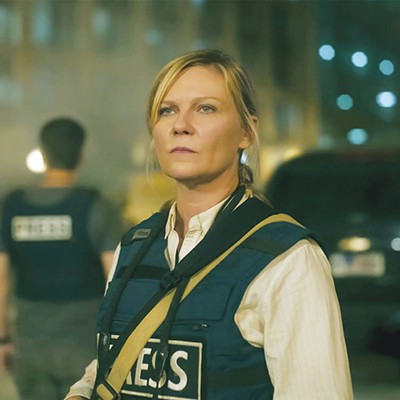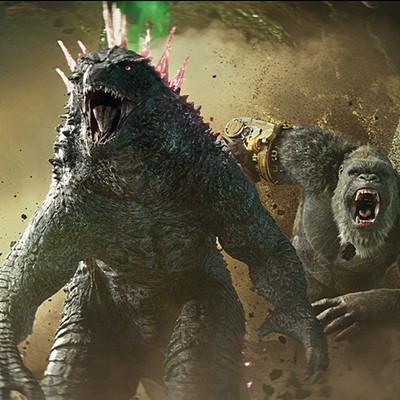One of the many graphic rape scenesI can't say that this movie is boring. Let's just say it's longer than it should be. It's the kind of documentary you can watch on the History Channel and be glad there are commercials so you can take a well-deserved break.
There are, however, a ton of interesting facts. In fact, I wrote down a lot of them just so I could feel smarter. But the gist of this movie is pretty simple: Hitler stole or destroyed a bunch of artwork. Some items are lost forever. Some were found and restored. There are debates on who gets them after they are rediscovered. The End.
Rape of Europa provides a fairly detailed history lesson on the rise and fall of the Third Reich, introducing a theory that most cities were targeted due to the artwork they housed to accommodate Hitler's desire to build the ultimate Nazi art museum. There was a hit list of cities to be plundered and pillaged for masterpieces he deemed Third Reich-worthy. The film suggests, for example, that Russia's Leningrad was bombed for its Armitage museum. On the other hand, Warsaw was almost annihilated because like the Jews, the Nazis considered Poles a vile race and their art degenerate. That's right, the film suggests that Warsaw was virtually destroyed because its residents had bad taste. Soon, cities got wise to the fact that museums were obliterated and/or looted. There were massive evacuation relocation plans from the Louvre and other museums, moving the precious treasures to remote castles miles away. Oddly, Hitler spared Paris, because he wanted it to be a mere shadow next to his uber museum.
When the U.S. got involved in the war, General Eisenhower stated that the military should protect (by any means possible) all art and architecture-kinda hard when yer bombing the be-jeezuz out of everything. This brings to light an existential pondering and a nice counterpoint: Which is more important: art or human life? When you have orders not to shoot at a building from which people are shooting at you, that's one tough call.
The film also introduces Deane Keeler, a then 42-year-old art professor who headed a task force called the Monuments Men that battled to save and restore masterpieces. They had some luck preserving and salvaging many pieces over the course of the war and were instrumental in obstructing the vindictive destruction of cities during battle.
Another factoid that I'm sure can go straight to the debate table is that Adolf Hitler wasn't accepted into a prestigious art school; he was beat out by two Jewish scholars. A fact that may have cemented his anti-Semitism.
I found a couple of things from this movie really interesting. First, Hitler's second in command, Hermann Goring, is by far the most loathsome and creepy looking guy ever on celluloid. Even after decades in archival footage he radiates evil. And ironically, Goring was the biggest art-horde of them all-Hitler himself paled by comparison. The other fact that caught my eye is that one of my favorite paintings (Vermeer's "The Astronomer") was a stolen and then unearthed masterpiece. Not much news to most but to me, a milestone. Without art, history is lost.
All in all, Rape of Europa reveals some stunning facts and it's good to know that a lot of Europe's lost treasures have been found, though there are still a staggering number still missing-gone, destroyed, horded, painted over, a collector's dream-prize, or for sale on eBay. The devastating fact remains-the atrocities of the war will never go away.
Rape of Europa
Directed by Richard Berge & Bonni Cohen
Narrated by Joan Allen


















